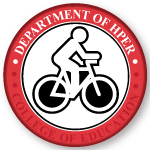Author ORCID Identifier
Document Type
Article
Publication Date
12-2018
Publication Title
Medicine & Science in Sports & Exercise
Volume
50
Issue
12
First Page
2409
Last Page
2417
Abstract
Purpose
The effect of an acute bout of exercise, especially high-intensity exercise, on the function of mitochondrial respiratory complexes is not well understood, with potential implications for both the healthy population and patients undergoing exercise-based rehabilitation. Therefore, this study sought to comprehensively examine respiratory flux through the different complexes of the electron transport chain in skeletal muscle mitochondria before and immediately after high-intensity aerobic exercise.
Methods
Muscle biopsies of the vastus lateralis were obtained at baseline and immediately after a 5-km time trial performed on a cycle ergometer. Mitochondrial respiratory flux through the complexes of the electron transport chain was measured in permeabilized skeletal muscle fibers by high-resolution respirometry.
Results
Complex I + II state 3 (state 3CI + CII) respiration, a measure of oxidative phosphorylation capacity, was diminished immediately after the exercise (pre, 27 ± 3 ρm·mg−1·s−1; post, 17 ± 2 ρm·mg−1·s−1; P < 0.05). This decreased oxidative phosphorylation capacity was predominantly the consequence of attenuated complex II–driven state 3 (state 3CII) respiration (pre, 17 ± 1 ρm·mg−1·s−1; post, 9 ± 2 ρm·mg−1·s−1; P < 0.05). Although complex I–driven state 3 (3CI) respiration was also lower (pre, 20 ± 2 ρm·mg−1·s−1; post, 14 ± 4 ρm·mg−1·s−1), this did not reach statistical significance (P = 0.27). In contrast, citrate synthase activity, proton leak (state 2 respiration), and complex IV capacity were not significantly altered immediately after the exercise.
Conclusions
These findings reveal that acute high-intensity aerobic exercise significantly inhibits skeletal muscle state 3CII and oxidative phosphorylation capacity. This, likely transient, mitochondrial defect might amplify the exercise-induced development of fatigue and play an important role in initiating exercise-induced mitochondrial adaptations.
Recommended Citation
LAYEC, GWENAEL; BLAIN, GREGORY M.; ROSSMAN, MATTHEW J.; PARK, SONG Y.; HART, COREY R.; TRINITY, JOEL D.; GIFFORD, JAYSON R.; SIDHU, SIMRANJIT K.; WEAVIL, JOSHUA C.; HUREAU, THOMAS J.; AMANN, MARKUS; RICHARDSON, RUSSELL S.. Acute High-Intensity Exercise Impairs Skeletal Muscle Respiratory Capacity. Medicine & Science in Sports & Exercise 50(12):p 2409-2417, December 2018. | DOI: 10.1249/MSS.0000000000001735


Comments
This is a non-final version of an article published in final form in LAYEC, GWENAEL; BLAIN, GREGORY M.; ROSSMAN, MATTHEW J.; PARK, SONG Y.; HART, COREY R.; TRINITY, JOEL D.; GIFFORD, JAYSON R.; SIDHU, SIMRANJIT K.; WEAVIL, JOSHUA C.; HUREAU, THOMAS J.; AMANN, MARKUS; RICHARDSON, RUSSELL S.. Acute High-Intensity Exercise Impairs Skeletal Muscle Respiratory Capacity. Medicine & Science in Sports & Exercise 50(12):p 2409-2417, December 2018. | DOI: 10.1249/MSS.0000000000001735